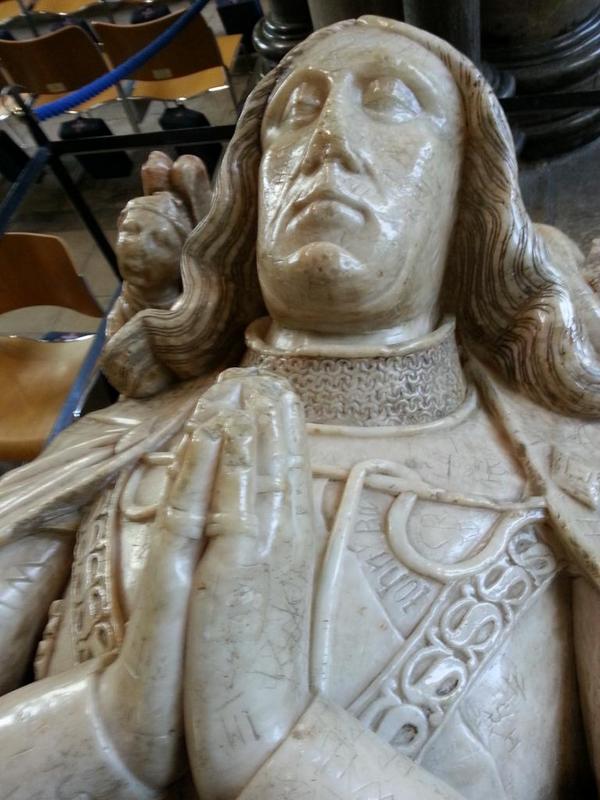Today is the anniversary of the battle of Bosworth, fought on August 22nd 1485.
There is an online post from Tudor Place about participants in the battle and the competing claims of Ambion Hill and Dadlington to be the site of the battle at The Battle of Bosworth Field 1485 It is unfortunately not too easy on the reading eye but full of interesting details as to who was actually there.
As the story in this online article Is this the field where Richard III lost his kingdom for a horse? Real location of Battle of Bosworth finally revealed after 500 years from the Mail Online from 2010 shows the precise site of what has been seen ever since it was fought as being a decisive battle has remained debatable until recent years. This article is centred on the discovery of a Ricardian retainer’s white boar badge on the more southerly site.
Also in recent years two fragments of what were believed or claimed to be standards from
the battle have turned up at auction. You know the feeling, you wait over five hundred years for a piece of Bosworth battle flag to turn up, and then two do …
The first was sold in 2013 and came from a standard or banner that hung in Stanton Harcourt church in Oxfordshire. There are reports about it from the MailOnline at Fragment of the 500-year-flag that flew as King Richard III was killed in the Battle of Bosworth Field set to sell for £5,000, at 'Bosworth relic' sold at auction from BBC News, at Battle of Bosworth flag remnant sells for thousands at auction, at Battle of Bosworth flag makes $6,500 at Hansons auctioneers and at Fragment of Bosworth Field flag
The standard hung over the tomb of Sir Robert Harcourt (d.1490) and he is described as King Henry VII’s standard bearer. If so he must have taken over in a hurry from Sir William Brandon, father of Charles, the future royal in-law and Duke of Suffolk, who was killed during the battle. It is of course possible - indeed probable - that this was one of many banners that were at the battle.
A second piece reputedly from a standard that was in use at the battle came to a Suffolk sale room in 2014 as is reported in by BBC News in 'Bosworth flag' sold at auction
Another link with the battle is the striking alabaster effigy of Sir John Cheyne in the north aisle of the nave of Salisbury Cathedral. Having made his career at the court of King Edward IV as a household member and Master of the Horse Cheyne rapidly moved into opposition to King Richard III and into exile alongside Henry Earl of Richmond in 1483. He was apparently 6’8” tall and one of Henry’s bodyguards at the battle. Unhorsed by King Richard he survived the final melee and went on to become a Knight of the Garter and a peer.
There are biographies of him from Wikipedia at John Cheyne, Baron Cheyne and a much more detailed one from the ever useful Royal Berkshire History at John Cheney, Baron Cheney (c.1442-1499) and a video presentation at Men of Bosworth - Sir John Cheyne. There is also a note about him at The Tallest Knight
If he was the height he was believed to be - the calculation is based on his skeletal remains - then he must have stood taller than King Edward IV, who is thought to have been about 6’4”. Maybe that attracted the King towards him, and certainly the future King Henry VII to have him as one of his bodyguards at the battle which changed his life, and ultimately his realm.
Finally I see that the British Library Mefieval manuscripts blog - which is always worth looking at - has an excellent article today about references to Bosworth in the BL collections, and to books they hold that belonged to King Richard III both before and after his accession to the throne. The first manuscript featured is the Beaufort-Beauchamp Hours, which clearly has a close link to the victor.
The handsomely illustrated article can be seen at Richard III: fact and fiction


No comments:
Post a Comment